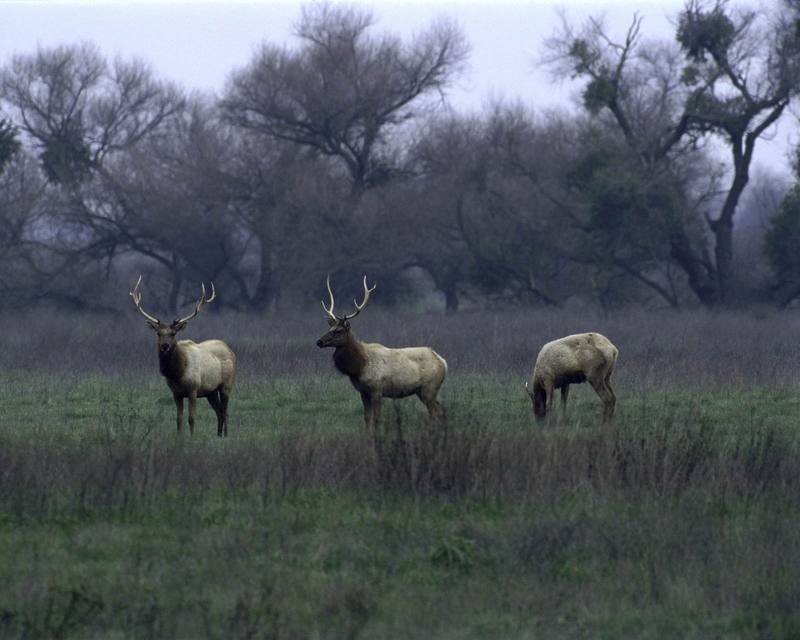|
Elks (Cervus elaphus) (엘크, 북미 붉은사슴)
| 제목: | Elks (Cervus elaphus) (엘크, 북미 붉은사슴)
| | 올린이: | Phoby (phoby@hanafos.com)
| |

| 해상도: 1980x1584
파일크기: 386967 Bytes
촬영일: 2004:10:09 21:49:49
등록시간: 2004:10:09 21:38:20
|
From the U.S. Fish and Wildlife Service's online digital media library .
Check http://images.fws.gov/ for higher quality version.
Metadata
Title: San Luis National Wildlife Refuge, California
Alternative Title: (none)
Creator: Hollingsworth, John and Karen
Source: WV-10128-Centennial CD
Publisher: U.S. Fish and Wildlife Service
Contributor: NATIONAL CONSERVATION TRAINING CENTER-PUBLICATIONS AND TRAINING MATERIALS
Language: EN - ENGLISH
Rights: (public domain)
Audience: (general)
Subject: endangered species, mammals
Description Abstract: San Luis NWR, Los Banos, California: Tule elk, smallest member of the elk family, were once so numerous they crowded California's Central Valley. However, market hunting nearly wiped them out. They were saved partly through the efforts of a cattle baron, Henry Miller, who owned much of the land between Fresno, California, and Oregon. Miller paid hunters to bring elk and release them alive on his property. There are now 3,000 in herds around the state. Other species found in the fields and marshes of San Luis Refuge include Swainson's hawks, Aleutian Canada geese, San Joaquin kit foxes, and giant garter snakes (all threatened or endangered species); waterfowl and shorebirds numbering close to one million; and a million blackbirds of four species (Brewer's, red-winged, yellow-headed, and tri-colored). Visitors can also fish for striped bass, green sunfish, and catfish.
Date: November 19 2002
|
댓글 |
|---|
| | 손님 |
|
Scientific Name: Cervus elaphus Linnaeus, 1758
Common Names:
English – Red Deer, Western Red Deer, Elk, Wapiti
French – Cerf Élaphe, Wapiti
Spanish – Ciervo, Ciervo común |
^o^
동물그림창고 똑똑전화 누리집
^o^
|
|
|